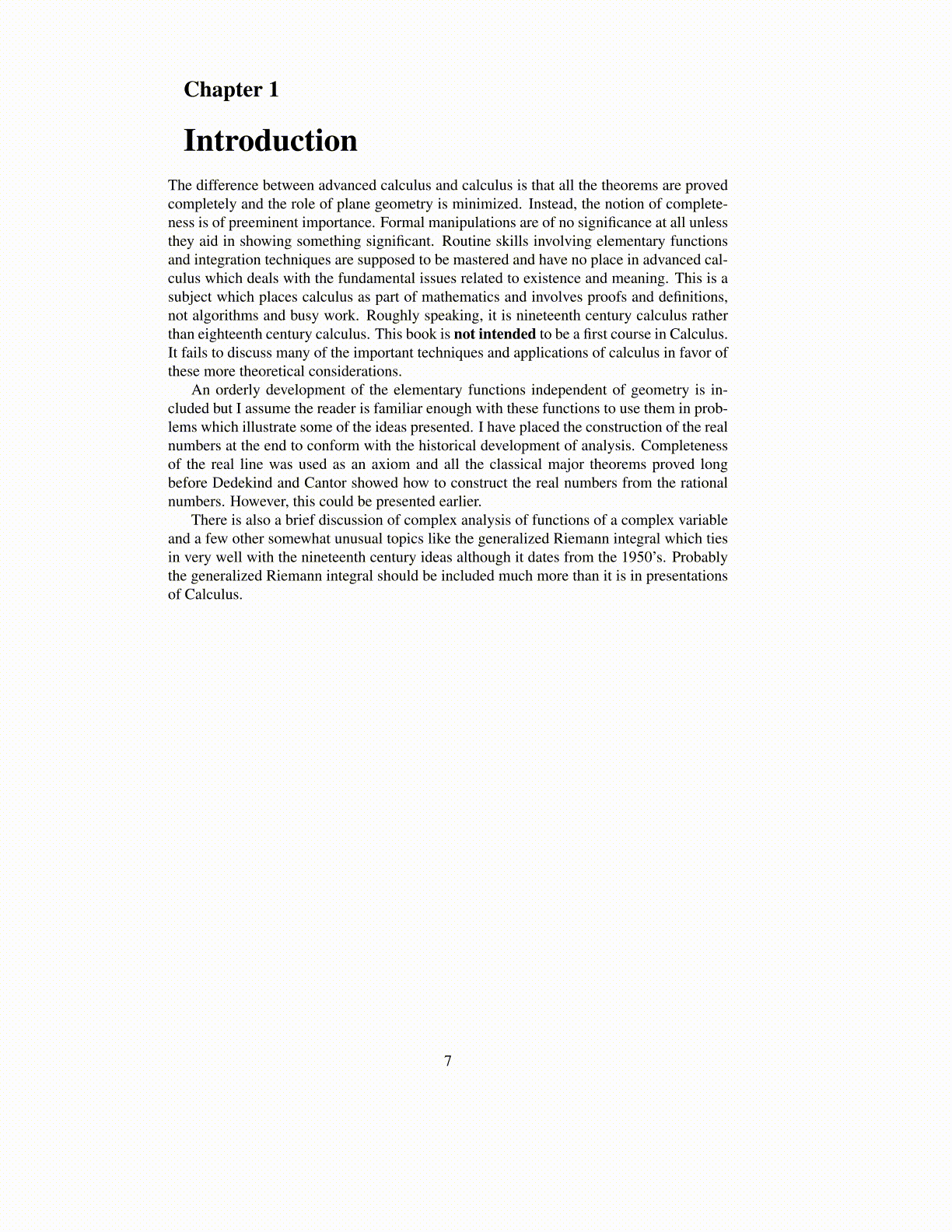
Chapter 1
IntroductionThe difference between advanced calculus and calculus is that all the theorems are provedcompletely and the role of plane geometry is minimized. Instead, the notion of complete-ness is of preeminent importance. Formal manipulations are of no significance at all unlessthey aid in showing something significant. Routine skills involving elementary functionsand integration techniques are supposed to be mastered and have no place in advanced cal-culus which deals with the fundamental issues related to existence and meaning. This is asubject which places calculus as part of mathematics and involves proofs and definitions,not algorithms and busy work. Roughly speaking, it is nineteenth century calculus ratherthan eighteenth century calculus. This book is not intended to be a first course in Calculus.It fails to discuss many of the important techniques and applications in favor of these moretheoretical considerations.
An orderly development of the elementary functions independent of geometry is in-cluded but I assume the reader is familiar enough with these functions to use them in prob-lems which illustrate some of the ideas presented. I have placed the construction of the realnumbers at the end to conform with the historical development of analysis. Completenessof the real line was used as an axiom and all the classical major theorems proved longbefore Dedekind and Cantor showed how to construct the real numbers from the rationalnumbers. However, this could be presented earlier.
There is also a brief discussion of complex analysis of functions of a complex variableand a few other somewhat unusual topics like the generalized Riemann integral which tiesin very well with the nineteenth century ideas although it dates from the 1950’s. Probablythe generalized Riemann integral should be included much more than it is in presentationsof Calculus.
7